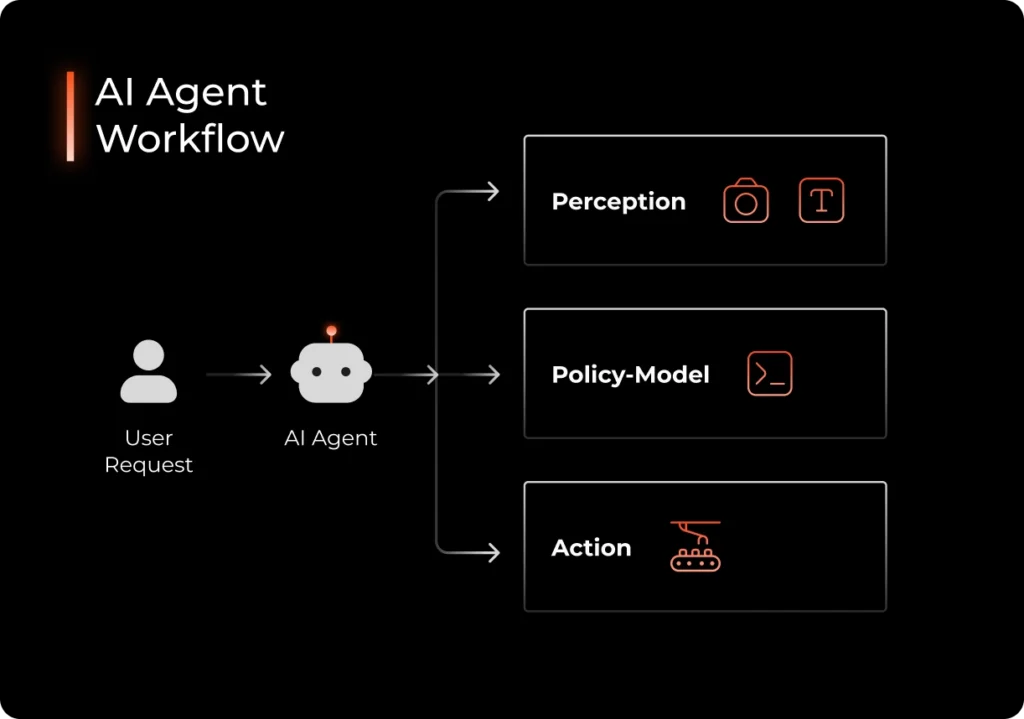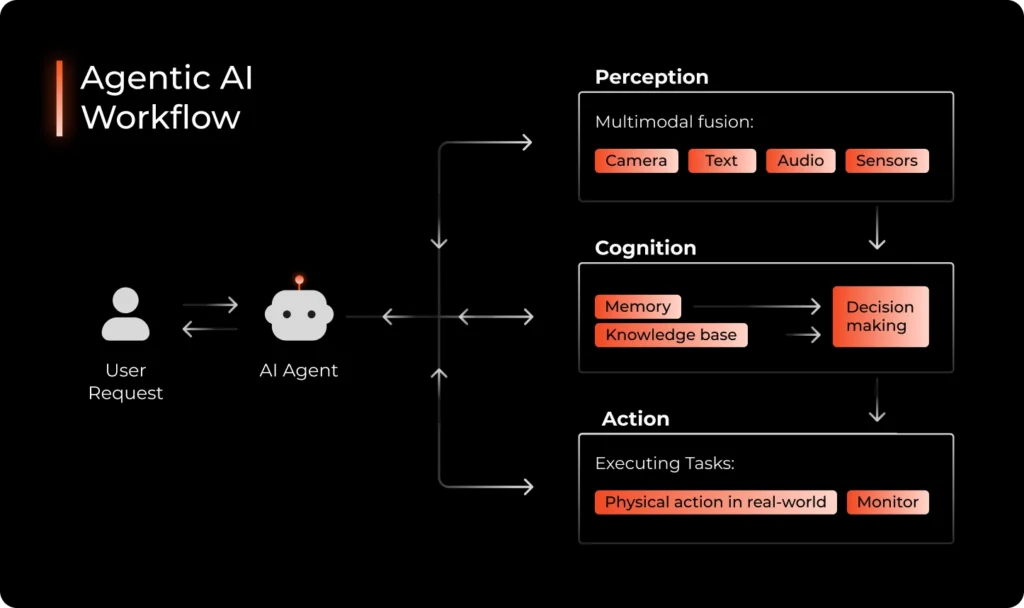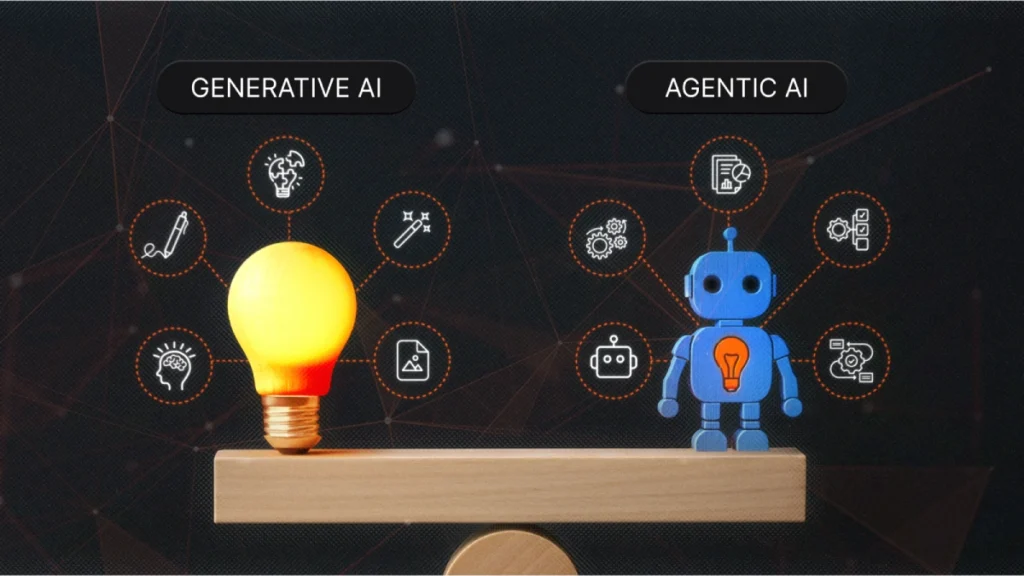
Current enterprise AI discussions often blur the line between AI Agents and Agentic AI, treating them as interchangeable. They are not. They represent fundamentally different classes of systems, separated by structure, cognitive depth, autonomy, and environmental adaptability.
Understanding this difference is crucial for organizations designing intelligent systems. It determines:
- How reliable your automation will be
- How scalable your intelligence layer becomes
- And where autonomy can be safely introduced
And enterprise adoption reflects this gap clearly:
62% of organizations are experimenting with AI agents, yet only 23% are scaling agentic-AI systems inside live business functions. This is a capability boundary rather than a lag in adoption
For readers who want a deeper, enterprise-grade view of this distinction, Syren’s latest whitepaper, Agentic AI in Pharma & Life Sciences, provides a formal architectural breakdown of agent behaviour, autonomy, and multi-agent coordination. It reinforces why organizations should treat AI Agents and Agentic AI as fundamentally different system paradigms—not incremental variants of the same approach.
If you’re exploring how these systems differ from GenAI more broadly, Syren’s detailed breakdown on Agentic AI vs. Gen AI offers a good conceptual foundation.
This article breaks down that boundary with conceptual clarity and architectural precision between AI agents vs. Agentic AI.
AI Agents: Structured, Bounded Execution Systems
An AI Agent is best understood as:
A system that perceives an input, applies deterministic or model-led logic, and acts within a predefined environment.
This definition captures three realities:
Boundedness
AI Agents operate within fixed constraints, limited action sets, predefined tools, restricted environment variables, and predictable interaction patterns. Their intelligence remains scoped and their behaviour predictable.
Direct Mapping
Every agent ultimately resolves to a linear functional pattern. Every agent resolves to a linear functional pattern, which limits long-horizon reasoning, multi-step planning, dynamic strategy switching, and contextual adaptation.
Minimal or Ephemeral Memory
AI Agents store only minimal or ephemeral context. They may retain temporary data within a session, but they lack persistent memory, cross-scenario generalization, self-evolving knowledge, and long-term state tracking.
No Goal Formation or Replanning
AI Agents do not form or restructure goals. They do not decompose objectives or rethink strategies; they simply execute what they are told.
Agentic AI: Systems That Reason, Strategize, and Adapt
Agentic AI represents a higher tier of autonomy. Not because it uses a stronger model, but because it is built on a fundamentally different loop.
If you want a more foundational primer before going deeper, Syren’s guide on What Is Agentic AI? explains the core capabilities and design principles that define agentic systems.
Let’s break down its structural components.
Goal-Driven Operation
The system begins with a goal, not a task. A key difference: Agentic AI doesn’t simply answer “what is next?” It asks, “What should the next step be, given the goal and the scenario?”
Persistent, Structured Memory
Agentic AI retains episodic memory (events and outcomes), semantic memory (knowledge and schemas), procedural memory (successful strategies), and vector/symbolic memory (representational understanding). This memory base enables long-horizon reasoning, learning from outcomes, consistent stateful behaviour, and continuity across contexts, capabilities that AI Agents cannot match.
Multi-Step Planning
Agentic AI performs deliberate reasoning using chain-of-thought reasoning, recursive decomposition, tree search, self-verification, failure recovery, and dynamic replanning. These skills allow it to navigate ambiguity, shifting data, interdependent tasks, and unexpected constraints.
Multi-Agent and Tool Coordination
Agentic AI can orchestrate external tools, APIs, perception modules, evaluators, and domain-specific functions while reasoning about which resource is best suited for each step.
The Four Dimensions That Define AI Agents vs. Agentic AI
| Dimension | AI Agent | Agentic AI |
|---|---|---|
| Goal Complexity | Executes tasks | Pursues goals with sub-goals, trade-offs, and constraints |
| Environmental Complexity | Performs well in predictable, low-variable contexts | Thrives in uncertain, dynamic, multi-variable environments |
| Adaptability | Rigid, rule-bound, one-path execution | Flexible, revises strategies, corrects paths mid-execution |
| Independent Execution | Requires continuous prompting | Operates continuously until the goal is achieved |
Architectural Boundary
To make this distinction clear, here are the actual workflow structures.
AI Agent Workflow
Characteristics:
- No planning
- No goal-decomposition
- No memory
- No coordination
- No strategy refinement
This loop is simple, fast, and bounded.
Agentic AI Workflow
Characteristics of Agentic AI:
- Long-horizon reasoning
- Adaptive behaviour
- Multi-agent orchestration
- Goal-first execution
- Feedback-driven improvement
This loop is structurally incapable of being replicated by traditional agents.
Why Enterprises Must Treat Them Separately
Enterprises confuse the two because both:
- Use LLMs
- Call tools
- Appear autonomous
But the AI Agents vs. Agentic AI difference is architectural and behavioural.
AI Agents help you
- Automate workflows
- Reduce manual effort
- Improve consistency
- Accelerate repetitive tasks
Agentic AI helps you
- Automate decisions
- Navigate uncertainty
- Optimize multi-step outcomes
- Operate autonomously across domains
One is operational. The other is strategic.
AI Agents vs. Agentic AI Quick Summary
| Dimension | AI Agent | Agentic AI |
|---|---|---|
| Orientation | Task execution | Goal pursuit |
| Reasoning | Shallow, single-step | Deep, multi-step, recursive |
| Memory | Minimal | Persistent, evolving |
| Behavior | Reactive | Adaptive |
| Coordination | Single | Multi-agent / multi-tool |
| Planning | None | Explicit |
| Autonomy | Low | High |
| Fit | Stable environments | Dynamic environments |
Final Perspective
The distinction between AI Agents and Agentic AI is not incremental; it is foundational.
- AI Agents automate what is known. Agentic AI navigates what is changing.
- AI Agents execute instructions. Agentic AI interprets objectives.
- AI Agents react to triggers. Agentic AI adapts to environments.
Enterprises building next-generation systems need to recognize the clear divide and architect between Agentic AI vs AI Agents, because real autonomy begins only when systems stop waiting for commands and start pursuing goals.





